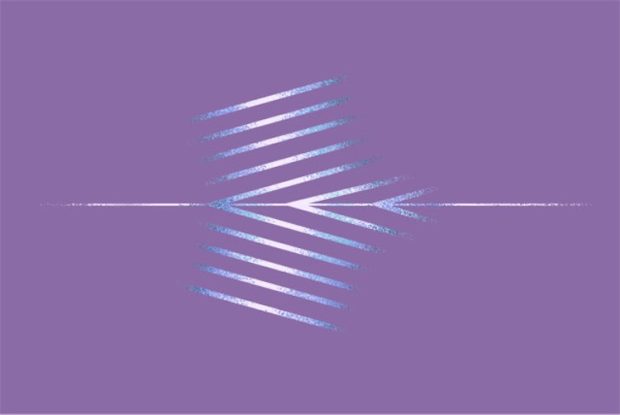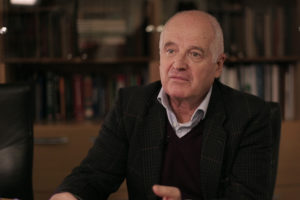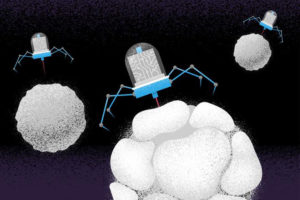Electrochemical Metamaterials
Chemical physicist Alexey Kornyshev on metamaterials, plasmonics and Raman scattering
The video is a part of the project British Scientists produced in collaboration between Serious Science and the British Council.
Graphene is single-atom-thick, so not very thick at all, so of course it is very difficult to see in principle. So in 2004, 2003, 2005 people had this issue: how do I know that I am making graphene? How do I know that the material that I am making is actually single-atom-thick? And that’s a very important question, because if you don’t know what you are making forget about any application, forget about any device. And that’s where spectroscopy comes in. Graphene really likes interacting with light and that has really created conditions for its widespread application and effusion in all the labs. Indeed, in 2004 people were surprised to recognize graphene simply by using an optical microscope. You could look down and you would see a contrast on the substrate and that would tell you that you have a graphene flake.
Again, in 2004-2005 in order to investigate graphene we were doing what they have called Hall bars, so essentially we are taking graphene, we are shaping it in a rectangular structure with some contacts and we are putting this at a very low temperature in a cryostat and then we are applying magnetic field and after we did all of this we could see this massless Dirac fermion so we could be sure of the quality of the sample that we were making. There is only one flaw here, or maybe two flaws, one is that after you do all of this, what do you do with the graphene? You throw it away because it’s been shaped, it’s put in a bar, it’s put in a cryostat, so it’s not freely available to you. And second, most labs and certainly almost no company has the ability of doing this in order to recognize the sample.
So this was the problem we faced in 2003-2004 and we realized that by doing inelastic light scattering, so by having light interact with graphene, with the atoms of graphene, and exchanging energy with the atomic structure, and looking at the amount of energy that was lost you could actually tell a lot about the samples, you could tell the number of layers, the doping, the functionalization, the strain, the presence of defects and many-many other properties. And this is the basis of what is called Raman spectroscopy. And Raman spectroscopy was what we developed in our first paper on graphene in 2004, we were looking at the behaviour of the vibration of the graphene lattice at certain asymmetric points of the structure of graphene. And by using light you can couple very easily to certain vibrations and those can be seen selectively very easily in your spectrometer. And this is the fundamental technique that is now used in every single lab, every single company, everywhere worldwide in order to identify the sample.
Why is that? Because I like the Hall bar and I like other approaches, you don’t have to touch it with your own hands, you just shine a laser and it comes back. And after you’ve done measuring the sample is still pristine and it’s not damaged and it’s available to you to do whatever you want with it. This is called non-destructive spectroscopy or characterization tool, because it does not destroy, does not modify the sample, but gives you all the information that you want. Most characterization techniques have some advantages and some disadvantages, but I must say that when it comes to spectroscopic investigation of graphene, the advantages are far superior to any disadvantage that you could have. The only disadvantage that you may have is the speed: it may be taking minutes or hours – depends on the size of the sample – in order to do the full characterization, but in reality the fact that you preserve the sample in the pristine state and then you can use it for something else really overwhelms any other consideration.
I also have to say that people are now developing other spectroscopic approaches in order to be quicker in doing the characterization of graphene. For example, one approach is to shine terahertz radiation on the sample similar to the radiation that you use in the airport to do security scans. And in this way you can actually distinguish regions with more or less defects and especially grains of different size and different orientation within the sample. The drawback is that this terahertz long-wavelength measurements have a very poor special resolution of the order of millimetres or several hundred micrometres or tens of micrometres. With traditional Raman spectroscopy you can go down to a few hundred nanometres. Actually, this technique has been perfected and there are ways of taking spectroscopic information down to the few nanometres level, so much shorter than the wavelength of light that you are using for the investigation. This can be done by coupling light with plasma – so with the electron-electron C that stands at the top of a metal tip and this massively enhances the electric field locally and allows you to get very precise and very local information on your sample.

Spectroscopic investigation of graphene is not fully solved. There are many questions that remain open – and especially when it comes to more than a single layer. So when you have 2 layers, 3 layers, 4 layers, 100 layers and these layers are, for example, at a different angle with respect to one another, so how do I distinguish the angle between each of these samples? Or, more interestingly, what happens when I go to the thousands of layered materials that do exist? For most of them we do not have any theory or experiments when it comes to spectroscopy and so all the work needs to be done, so in terms of spectroscopic investigation of layered materials there are tens of years ahead of us of very interesting and exciting physics to be done in order to extract the information, but the beauty is that once you understand the basic physics, you can turn quickly this technique into an industrial or mass production technique.
You must know that several companies use spectroscopy in the production line in order to check the quality of their samples. Unlike what some people think – we do have already mass production of graphene in 2016, here in Cambridge there is a company called Aixtron, that produces equipment that can make graphene in 80000 millimetre wave a scale – hundreds of waves at the same time – or even continuously – you can put a substrate on one end and it continuously produces a large film. We have another company that can make tons of graphene in the powder form, it’s called Cambridge Nanosystems, we have another company that can make a lot of graphene inks and liquids and in the United Kingdom we have many-many companies, so there are companies all over the world – in Europe, in Asia, in China, in the US producing graphene by the metre, the litre, the ton, the kilogram and whatever. And now it is extremely important to standardize the production and the quality, and here spectroscopy plays a key role. All the companies will need to apply the same spectroscopic approach in order to create a common standard, so that the customer and the final user know exactly what they are getting. So actually it’s the best time for spectroscopic investigations of graphene, because everybody needs them pretty much as it is already another research field, you need to standardize the production, you need to assess in the production line what you are doing and spectroscopy is certainly one of the approaches that I am sure every company will use and is using already.

Chemical physicist Alexey Kornyshev on metamaterials, plasmonics and Raman scattering

Professor of Physical Chemistry Peer Fischer on nanorobots, why are they so hard to work on and what might be ...

Neuropsychologist Chris Frith on the experiments with biological motion, emotion recognition, and open questio...